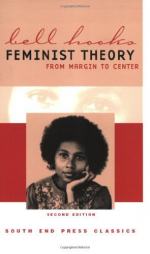
|
| Name: _________________________ | Period: ___________________ |
This test consists of 5 short answer questions, 10 short essay questions, and 1 (of 3) essay topics.
Short Answer Questions
1. What do feminists need to consider when examining their beliefs about men?
2. According to the author, how did early feminists see gender?
3. What potential effect can feminism have on the family, in the author's view?
4. What must happen in order for women to create true sisterhood?
5. What is the awareness about sexual oppression that the author advocates?
Short Essay Questions
1. What are the universal definitions of feminism that the author disagrees with? List several.
2. Why is educating women a "feminist agenda," as the title to Chapter Eight suggests?
3. In the Preface to the Second Edition (January 2000) entitled "Seeing the Light: Visionary Feminism," what does the author have to say about her specific approach to feminism and the reactions it created?
4. Does the author offer her own definition of feminism in Chapter Two, and if so, what is it?
5. Is the author clear about her position on women who define feminism as seeking equality with men?
6. In the Preface to the First Edition (1984), what reasons does the author give for people finding themselves on the margins of society?
7. Does the author encourage a particular attitude towards manifesting change?
8. What significant effect can feminism have on the family?
9. How are traditional patriarchal concepts of gender related to violence against women?
10. What reasons does the author give for people finding themselves at the center of society?
Essay Topics
Write an essay for ONE of the following topics:
Essay Topic 1
Essay on Ch. 7: Women and work.
The author claims that bourgeois feminist's idealization of work alienated many women of color and working class women.
1) How is the early feminist view of work defined by race and class?
2) What were the experiences of many women of color and working class women? What alternatives do they have when the workplace turns out to be a place of discrimination and hierarchy?
3) Do you feel that we live in an equal opportunity society, or are opportunities still affected by a person's gender, race, and class? Provide examples for your argument.
Essay Topic 2
Essay on Ch. 10: Motherhood.
In Ch. 10, the author discusses views on motherhood, both feminist and traditional.
1) Describe traditional beliefs about motherhood mentioned by the author.
2) Next, describe and discuss early feminist reactions to motherhood.
3) Do early feminist beliefs and reactions concerning motherhood challenge and change, or simply reject traditional beliefs?
Essay Topic 3
Essay on Ch. 9: Women and war.
In Ch. 9 the author discusses the nature of violence against women and the phenomenon of violence in general. She uses war as an example of how women, too, demonstrate a capacity for violence. In your essay, think about the connection between traditional beliefs about gender and the author's analysis of women and war. Use quotations by the author to support your argument where necessary.
1) Discuss the author's position on how war is an example of women's capacity for violence.
- How do women support war?
- Does women's support for war, and their encouragement of male family members to go to war, seem to come from and reinforce traditional beliefs about men's and women's natures (e.g. aggressive, nurturing, etc.), whether innate or culturally learned?
2) Is condoning war the same as condoning violence? What can you gather about the author's views on war? Following the author's thinking, is war an example of using violence as a form of social control?
3) Does encouraging women (and gay men) to participate in the military and in war promote social equality?
4) If violence is a manifestation of hierarchy and power, what do women have to gain or lose from participating in war?
|
This section contains 1,044 words (approx. 4 pages at 300 words per page) |

|




